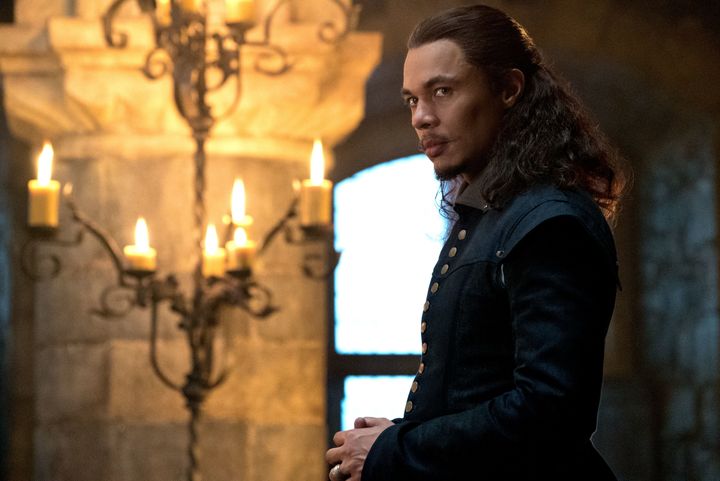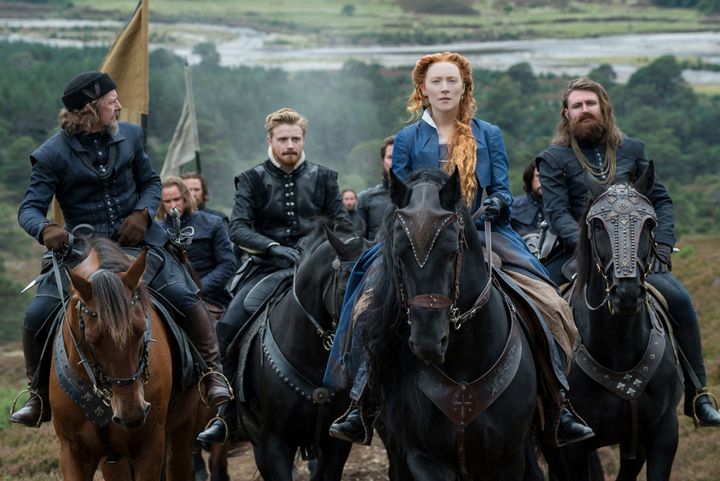Bringing historical events to life on screen is not an easy task, and naturally, viewers will often leave the cinema wondering how much of what they’ve just watched play out on screen really happened.
‘Mary Queen Of Scots’ – a new biopic about the Scottish monarch and her English counterpart – Elizabeth I, is no different but in this case, there’s one scene in particular which will leave cinema-goers questioning how much artistic licence has been used.

After getting married to Lord Darnley (played by Jack Lowden), Saoirse Ronan’s Queen Mary is just as shocked as audiences will be when she finds her husband in bed with her close male courtier, David Rizzio, the day after the wedding.
Their tryst (and Mary’s discovery of it) becomes the catalyst for numerous big events, ultimately resulting in Darnley being blackmailed into murdering his one-time lover.
But how much truth is there in this scene? Let’s take a closer look at the history books…
The film is based on John Guy’s biography about the monarch, ‘My Heart Is My Own: The Life Of Mary Queen Of Scots’. And as far as Guy is concerned, the gay affair definitely happened.
The historian has taken part in a number of interviews ahead of the film’s release, and recently told Out magazine: “A brief sexual relationship between Darnley and Rizzio is real history, not speculation.
“Darnley, who spent adolescent years in France, was effeminate and bisexual as was the vogue of young hedonistic courtiers in France.”
He’s also noted that “the idea of men and sexuality then was very different from what it is now”.

“Straight and gay were not so clearly defined in those days,” he told Vanity Fair. “It was not frowned on as much… and Mary was also a very tolerant person.”
Guy’s fellow historian Anna Whitelock backs up this claim in ‘Elizabeth’s Bedfellows: An Intimate History of the Queen’s Court’, in which she writes that the two men would lie sometime in one bed together”.
So that’s that then?
Nope, not quite. Did you really think there wouldn’t be any debate about this?
Professor Retha M. Warnicke says, in her own book on Queen Mary, that Darnley was jealous of Rizzio, infuriated by his closeness to his wife and rumours she had been unfaithful.
Warnicke claims Darnley was concerned about the influence Rizzio – an Italian outsider – was having on the Queen’s decisions, and it’s been claimed elsewhere that he was behind her decision to refuse Darnley the right to become her successor to the throne.
When Mary became pregnant, rumours of her infidelity intensified and some claim Darnley’s resentment and anger at this spurred him on to take part in the courtesan’s brutal murder – which took place in front of Mary, who was six months pregnant at the time.
Ok… What have other filmmakers done?
The gay affair storyline has become commonplace in artistic retellings of Queen Mary’s life, featuring in the 1971 film (starring Vanessa Redgrave and Timothy Dalton) and the more recent TV series, ‘Reign’.
The 1971 film goes for a “best of both” approach though, with its version of Darnley both being unfaithful and wildly jealous of Mary’s closeness to Rizzio.
‘Mary Queen Of Scots’ is in UK cinemas now.
